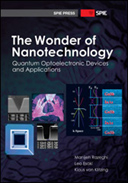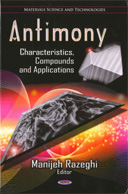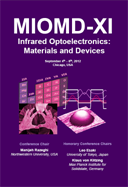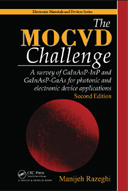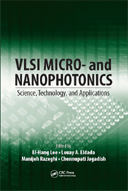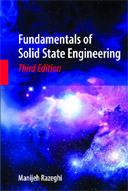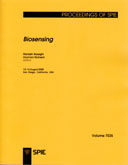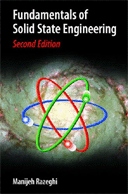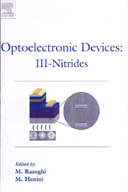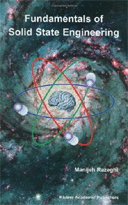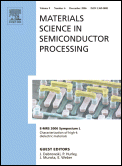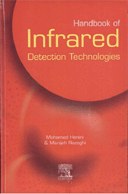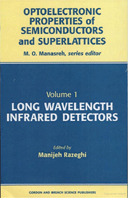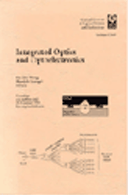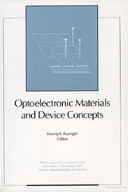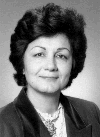 Click to View FULL CV
Click to View FULL CVClick here for Summary Biography
Walter P. Murphy Professor and Director Center for Quantum Devices,
Department of Electrical and Computer Engineering, Northwestern University
Department of Electrical and Computer Engineering, Northwestern University
Degrees:
- 1980 Docteur d'etat es Sciences Physiques, Universite de Paris, France
- 1977 Docteur 3eme Cycle, Solid State Physics, Universite de Paris, France
- 1976 DEA, Science des Materiaux, Universite de Paris, France
Academic and Industrial Experience:
- 1993-present Adjunct Professor, Optical Sciences Center, University of Arizona
- 1991-present Walter P. Murphy Professor of Electrical and Computer Engineering, and Director, Center for Quantum Devices, Northwestern University, Evanston, IL
- 1986-1991 Head, Exploratory Materials Lab, Thomson-CSF, Orsay, France
- 1986 Invited Professor, University of Michigan-Ann Arbor, MI
- 1985-1991 Visting Professor, Ecole Polytechnique, Lausanne, Switzerland
- 1981-1985 Senior Research Scientist, Thomson-CSF, Orsay, France
Awards and Honors:
- NASA Space Technology Hall of Fame (for antimonide-based superlattices)
- Research.com Electronics and Electrical Engineering in United States Leader Award -2024
- Research.com Best Female Scientist Award - 2023
- Research.com Electronics and Electrical Engineering in United States Leader Award - 2023
- Research.com Best Female Scientist Award - 2022
- Light Science and Application: Outstanding Contribution Award - 2024
- Member of Academy of Europe - 2021
- 2018 Benjamin Franklin Medal in Electrical Engineering - 2018
- Elected Lifetime Fellow of Institute of Electrical and Electronics Engineers (IEEE) - 2017
- Jan Czochralski Gold Medal - 2016
- IBM Faculty Award - 2013
- Elected Lifetime Fellow of Materials Rearch Society (MRS) - 2008
- Elected Fellow of Institute of Electrical and Electronics Engineers (IEEE) - 2005
- Elected Fellow of Institute of Physics (IOP) - 2005
- Elected Fellow of American Physical Society (APS) - 2004
- Elected Fellow of Optical Society of America (OSA) - 2004
- R.F. Bunshah Award from Intal Conference on Metallurgical Coatings and Thin Films - 2004
- Photonics West Optoelectronics 2004 Symposium Best Paper Award - 2004
- Elected Fellow of Optical Society of America( OSA) - 2003
- Nominated for Northwestern University McCormick Teacher of the Year Award - 2003
- Elected Fellow of International Engineering Consortium (IEC) - 2003
- Elected Fellow of Society of Photo-Optical Instrumentation Engineers (SPIE)- 2000
- Photonics West Optoelectronics 1998 Symposium Best Paper Award - 1998
- Elected Fellow of Society of Women Engineers - 1995
- Society of Women Engineers (SWE) Achievement Award - 1995
- IBM Europe Science and Technology Prize - 1987
- Numerous Best Paper Awards
Technical Expertise, Areas of Interest and Accomplishments:
- Dr. Razeghi is a pioneer in the area of III-V compound semiconductors and optoelectronic devices from the deep ultraviolet to the far infrared spectral bands, including in particular InP and GaAs based semiconductors and devices, which were at the heart of the optical fiber telecommunication revolution of the late 20th Century and the rise of the information age.
- From 1981 to 1991, while a Senior Research Scientist at first and then Head of the Exploratory Materials Laboratory at Thomson-CSF (Orsay, France), Dr. Razeghi developed and implemented most major modern epitaxial growth techniques such as low pressure metalorganic chemical vapor deposition (MOCVD), vapor phase epitaxy (VPE), molecular beam epitaxy (MBE), GasMBE, and MOMBE for entire compositional ranges of III-V compound semiconductors and heterostructures. Developing these tools was fundamental in enabling her to achieve high purity semiconductor crystals with a consistency and reliability that was often unmatched, thereby leading to new physics phenomena in InP and GaAs based semiconductors and quantum structures.
- Her pioneering work on InP based compound semiconductors and devices is best illustrated in her book "The MOCVD Challenge Volume 1: A Survey of GaInAsP-InP for Photonic and Electronic Applications" (Adam Hilger Press, 1989), which details the realization of some of the first high quality InP, GaInAs/InP and GaInAsP/InP materials, heterostructures and superlattices, on a variety of substrates, with the first demonstration of two-dimensional electron gas and observation of quantum Hall effect, the first two-dimensional hole gas, and the first observation of room temperature excitons in GaInAs/InP superlattices. From a more device-oriented viewpoint, as impressive is the realization of 1.3 and 1.55 μm laser diodes for optical fiber telecommunication laser sources, optical waveguides, the first InP based Gunn diode which revolutionized radar systems, as well as then futuristic monolithic integration.
- Equally comprehensive is her pioneering work on GaAs based semiconductors and devices which is described in her second book "The MOCVD Challenge Volume 2: A Survey of GaInAsP-GaAs for Photonic and Electronic Device Applications" (Institute of Physics Publishing, 1995). Some of her impressive contributions include: the first high quality GaInP/GaAs and GaInAsP/GaAs interfaces, heterostructures and superlattices, the first two-dimensional electron gas in this system, which led to the first heterojunction field effect transistor or HFET, modulation-doped FET or MODFET, two-dimensional electron gas FET or TEGFET in this system.
- In 1991, even though many institutions had repeatedly tried to bring Dr. Razeghi to the United States to join them, Northwestern University (NU) finally succeeded in convincing her to do so and qualified this as one of the most important hires at NU of the past 20 years. There, she founded the Center for Quantum Devices and concentrated her research activities on Quantum Mechanics and a wide range of Quantum Devices, including lasers, photodetectors and focal plane arrays covering a very wide spectral band from the deep ultraviolet (down to a wavelength of ~0.2 μm) all the way out to the teraherrtz (THz, >300 μm).
- She has first successfully pioneered in the area of high power aluminum free diode lasers emitting at a wavelength near 1 μm based on GaInAsP, which revolutionized the high power diode laser industry and their applications in the early 1990's, including diode pumped solid-state lasers and erbium doped optical fiber amplifiers for telecommunications. She is also the current world leader on Quantum Cascade Lasers (QCLs) based on InP. She holds many records for tuning range, output power, and wall plug efficiency.�Thanks to this work, such lasers are starting to supplant several other semiconductor, solid state and gas laser technologies operating in the same waveband, thereby reshaping a portion of the infrared laser industry with expected use for high accuracy chemical and biological agent sensing, free space optical communications and pollution monitoring. Her other significant contributions in the field of semiconductor diode lasers include her research work on InAsSb based multi quantum well and strained layer superlattice interband lasers with very low threshold operating in the midwave infrared spectral band.
- Dr. Razeghi's expertise extends to photodetectors and focal plane arrays operating in the mid, long and very long wavelength infrared spectral bands (3~32 μm). In particular, she has pioneered and is a world leader in the area of InAs/GaSb type II quantum heterostructures, photodetectors and focal plane arrays. Thanks to her work on this topic, this technology is beginning to reshape the infrared sensing industry and possibly leading to a technological revolution, with a direct impact on applications such as medical and manufacturing thermal imaging, firefighting, pollution monitoring, surveillance, law enforcement and many others. She also realized some of the first and only Quantum Dot Infrared Photodetectors (QDIPs) and focal plane arrays on GaAs and InP. In parallel, she has pioneered in the research on a wide range of Quantum Well Infrared Photodetectors (QWIPs) on InP for mid, long and very long wavelength spectral bands (4-19 μm) and demonstrated the first multi spectral QWIP on InP.
- Her research has also led to the successful realization of infrared detectors using very exploratory thallium and bismuth based semiconductor compounds such as InTlSb, InSbBi and InTlAsSb, that of uncooled InAsSb photon detectors, and of InSb focal plane arrays.
- Finally, Dr. Razeghi is also an expert in quantum devices operating in the deep ultraviolet spectral band, with the demonstration of novel light-emitting diodes, photodetectors and focal plane arrays with world record characteristics. Such devices are expected to be at the heart of next generation fast and reliable chemical and biological agent sensors, portable water purification systems, flame sensors, furnace monitoring, ozone pollution monitors, space UV astronomy, and many other applications.
- Based on her scientific research work, Dr. Razeghi is the author of 20 books and the author of 35 book chapters. She is the author or co-author of more than 1000 papers and has given more than 1000 invited and plenary talks. She holds 55 patents.
Academic Service:
- Created the Graduate and Undergraduate Programs in Solid State Engineering (SSE) in the ECE Department at Northwestern University, a 12 course curriculum.
- Supervised 55 PhD dissertations, 20 MS theses while at Northwestern.
- Currently supervises approximately 15 PhD students, Post-Docs, Visiting Researchers, and Faculty.
- H-Index of 108 (Google Scholar Citation Report).
Institutional and Professional Service:
- Chair and organizing committee of many international conferences
- Editorial Board, Applied Physics A, Springer-Verlag
- Editorial Board, Current Nanoscience, Bentham Science Publishers
- Editorial Board, Scientific Reports, Nature Publishing Group
- Editorial Board, Photnics, MDPI
- Editorial Board, Laser Research & Applications
- Editorial Board, Infrared Physics and Technology
- Editorial Board, Journal of Nanoscience and Nanotechnology, American Scientific Publishers
- Editorial Board, Journal of Nanotechnology, Institute of Physics Publishers
- Editorial Board, jPhys Photonics, Institute of Physics Publishers
- Editorial Board, Journal of Optoelectronics
- Editorial Board, Journal of Science, Technology, and Application of Integrated Optics, Kluwer Academic Publishers
- Editorial Board, Microelectronics Journal
- Associate Editor, Opto-Electronics Review, Polish Opto-Electronics Committee
- International Editorial Advisory Board, Opto-Electronics Review, Polish Opto-Electronics Committee
- International Editorial Advisory Board, The Bulletin PAS (Polish Academy of Sciences)
- International Advisory Board on Semiconductors, Polish Committee of Science
- United Nations Expert to Telebras, Brazil
- International Advisory Board for Sorbonne Paris Cite
- Panel Chair for the European Research Council's (ERC's) Condensed matter physics program
Professional Society Associations:
- American Association for the Advancement of Science (AAAS)
- Fellow American Physical Society (APS)
- Electrochemical Society
- French Academy of Sciences and Technology
- Fellow of International Engineering Consortium (IEC)
- Fellow of Institute of Electrical and Electronics Engineers (IEEE)
- Fellow of Institute of Physics (IOP)
- Lifetime Fellow Materials Research Society (MRS)
- Fellow of Optical Society of America (OSA)
- Fellow of Society of Photo-Optical Instrumentation Engineers (SPIE)
- Fellow and Life Member of Society of Women Engineers (SWE)
last updated 01/04/2024
.jpg)
.jpg)
